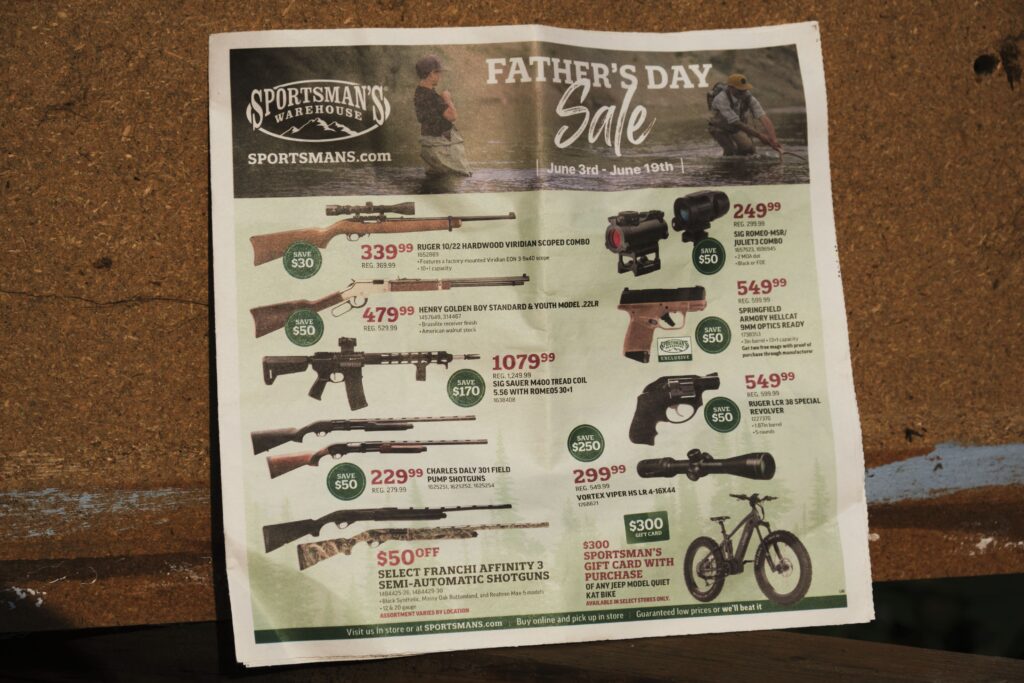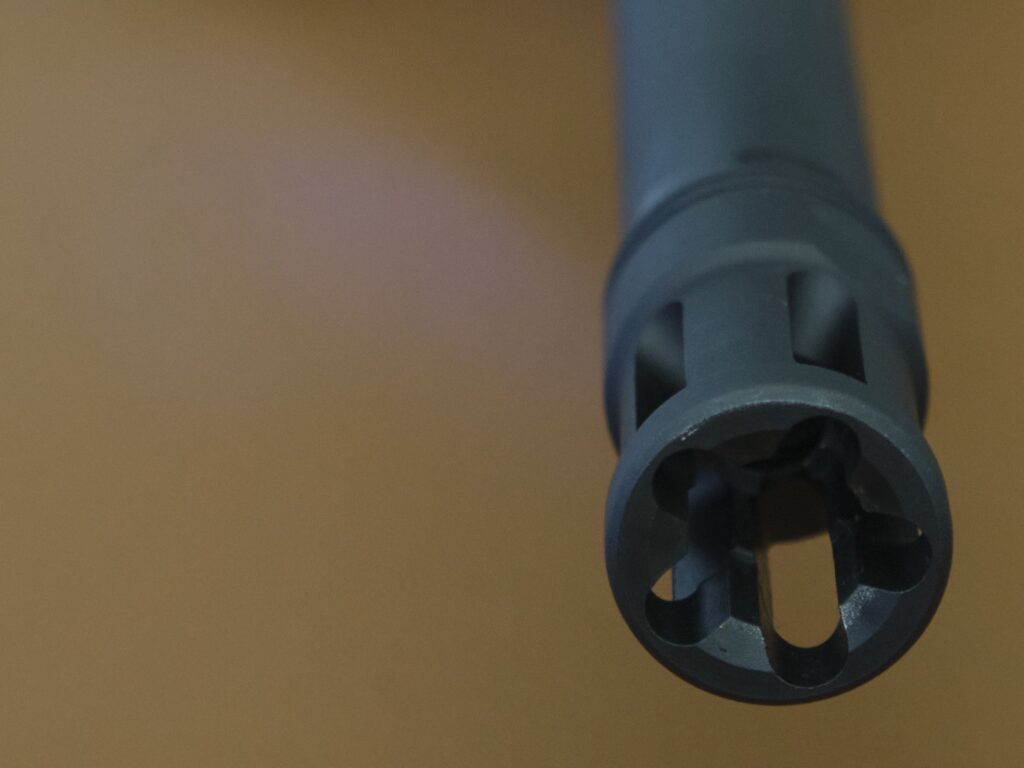“So you got an AR!” says a gunned-up colleague named Curtis. We’re care-workers doing a morning shift in a supported-living facility, and my news puts a spring in his step. “Congratulations,” Curtis says. “Matt, you are becoming American. Gotta assault rifle; all you gotta do now is get fat.”
“Cheers, mate,” I say, wiping down a countertop and thinking how inconceivable this was before I moved to Oregon from Australia, where rampage-esque firearms were outlawed and taken (with compensation) from existing owners way back in 1996.
Curtis, a hell of a great care-worker but not someone I know well, is the chattiest with me he’s ever been. We’re bonding. “So, Matt,” he says. “Why’d you buy an AR? For shits and giggles?”
“Pretty much, but it was a panic-purchase,” I say. “Biden was going on about how he wants to ban them, so I ran out and got one.”
In Oregon, it’s dead easy buying an AR-15. It feels slightly weird that I can do so –- that almost anyone of age can — but that’s because the whole self-defense/bulwark-against-tyranny gun-thing is new to me. And I absolutely do not want to be one of those morally superior expats, forever sneering at the local culture and blathering on about how wiser everything is back home.

I’m Stateside by choice. I’m here to put judgment aside and plunge in: to steep myself in America; to get messy with it. To get fat on it.
So, when the talk in Washington fires up about cracking down on assault rifles and associated slaughterous paraphernalia, I jump in my Chrysler and drive to a sporting-goods store here in the southern Oregon city of Roseburg, which hasn’t had a campus massacre since 2015’s bloodbath.
“Looking for an AR-15,” I tell the heroically muscled sales-attendant in the gun section.
He pulls a couple models from a rack behind him, checks they’re clear of ammo, and places them on the counter.
Watching the frequent coverage of American carnage from Australia gave me the wrong idea about AR-15s. I used to think that they were a singular notorious gun that some manufacturer was cleaning up on. But no, AR-15s are a collective dream of a gun, an archetype with as many iterations, as many expressions, as there are aficionados, yet all centered on the delivery of specific calibers of extremely injurious high-velocity, low-mass bullets from a handily lightweight “platform,” as the gun people say, in which the gas produced in the explosion of one bullet firing is captured to drive a mechanism that loads the next round in the magazine.
As idiosyncratic as this platform is, the parts and modifiers most often come in black, hence the AR-15’s nickname: the black rifle.
The black rifle that catches my eye at Waldron’s Outdoor Sports in Roseburg is a pre-customized Ruger AR-556. The grooved, rounded, iconic M16-style handguard that covers the barrel has been replaced by a four-sided brutalist rectangular Picatinny rail to which a stroboscopic flashlight and red-dot sight are attached. Mods are known as ‘furniture’ in the AR-15 scene, and I like the suite on offer.
It feels nasty. Looks evil. Yet modular and efficient. And it triggers my outsiders’ shock of what is permissible in America.
There is no license for getting strapped in Oregon — not like there are for fishing and driving. All it takes to buy a firearm is to flash government-issued ID to establish that you’re at least 18 in the case of long-guns, such as the Ruger I’m cradling in the store, and 21 for handguns. And then to pass a background check.
My driver license shows an old address so I slip across the concealed-carry permit I bought after doing a short, online, safety questionnaire. Guns can be carried openly and permit-free in Oregon, but strapping discreetly needs a permit, so when I Americaned-up last year, buying in quick succession a 545 cubic-inch HEMI V8 and a snub-nosed Smith and Wesson .38 Special, I zipped through the online test over a few glasses of red.
Black rifles retail for as little as around $450, but I’m a sucker these days for iconic American brands with solid materials and sharp craftsmanship so it’s closer to $1200 on the Visa for this Ruger with its imposing furniture already installed. Plus, this is a panic-purchase and who knows what’s going to happen to availability if the freedom-haters get traction with their assault on our … freedom.
“Background checks were taking about half an hour,” says the sales attendant. “But since those comments, I guess more people have decided to purchase a firearm and now the queue [for background checks] has really jumped up.”

So with the Ruger paid for, I have to wait a couple days for the background check to come through. Time crawls from the Friday of my purchase through Saturday, when they tell me I’m climbing in the queue, through Sunday when Waldron’s is frustratingly closed, to Monday.
On Monday all is good. I pick up and drive home my first AR-15.
It was that simple.
And when the 4th of July arrives, I drive the black rifle up a long, winding mountain road.
High in logged terrain scattered with stumps, piles of debris, and boasting huge views of the valleys below, I set up a table, fill my 30-round magazines (a capacity now banned just north in Washington State) with 5.56 NATO ammunition, rack a round, and let frigging rip.
While I remember earmuffs, eye protection, and the four cardinal rules of safe shooting, one thing I do forget is sunscreen.
By day’s end, my neck is bright red.

Leave a comment